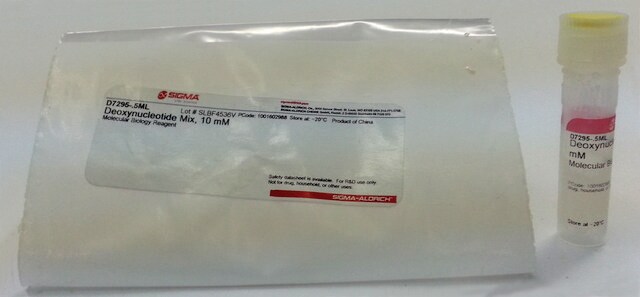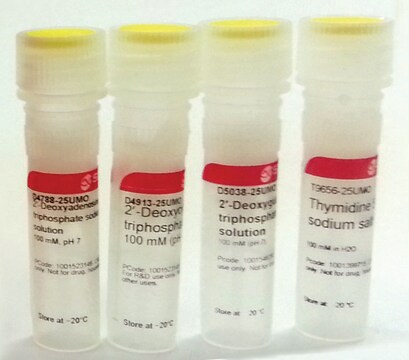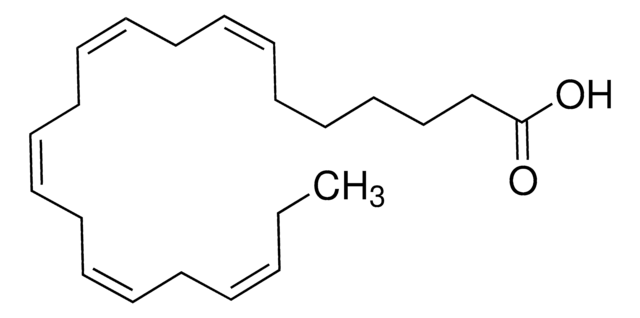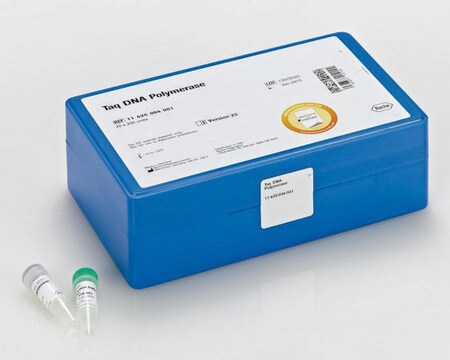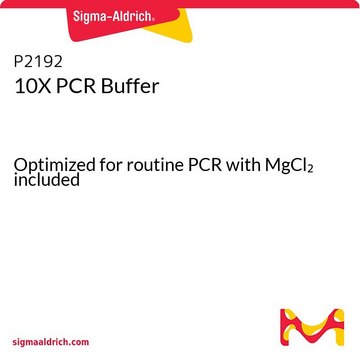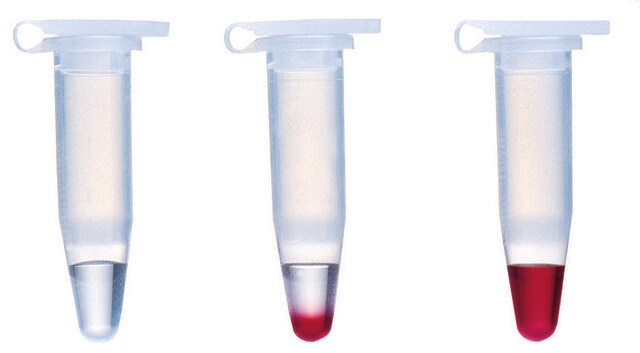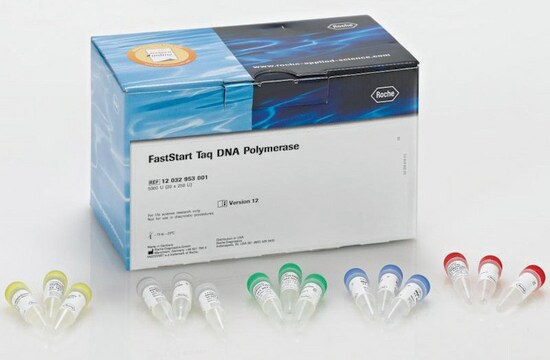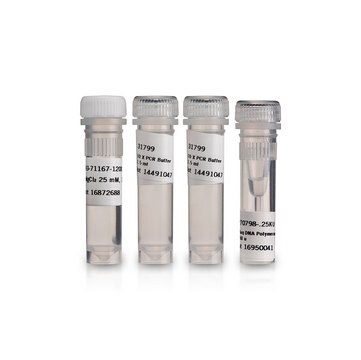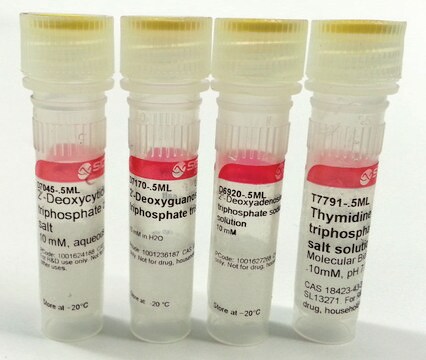Kluczowe dokumenty
D4545
Taq DNA Polymerase from Thermus aquaticus
with 10× PCR reaction buffer without MgCl2
Synonim(y):
Taq polymerase, Taq polymerase enzyme
About This Item
Polecane produkty
pochodzenie biologiczne
enzyme from bacterial (Thermus Aquaticus)
Poziom jakości
rekombinowane
expressed in E. coli
Formularz
liquid
zastosowanie
sufficient for 1500 reactions
sufficient for 250 reactions
sufficient for 50 reactions
sufficient for 5000 reactions
Właściwości
dNTPs included: no
hotstart: no
stężenie
5 units/μL
metody
PCR: suitable
kolor
colorless
moc wejściowa
purified DNA
przydatność
suitable for PCR and automated sequencing reactions
Zastosowanie
agriculture
Warunki transportu
wet ice
temp. przechowywania
−20°C
Szukasz podobnych produktów? Odwiedź Przewodnik dotyczący porównywania produktów
Opis ogólny
Zastosowanie
- in the process of DNA extraction (during gene amplification and sequencing)
- in genotyping
- in polymerase chain reaction (PCR) to study the constitutive production of epithelial neutrophil activating peptide 78 (ENA-78) and interleukin-8 (IL-8)
- for amplification of RNA from primary endothelial cells by conventional PCR
Działania biochem./fizjol.
Cechy i korzyści
- MgCl2 provided in a separate tube to allow MgCl2 optimization
- Can withstand repeated heating to 95 °C without significant loss of activity
Opakowanie
Inne uwagi
Definicja jednostki
Informacje prawne
produkt powiązany
Zwroty wskazujące rodzaj zagrożenia
Zwroty wskazujące środki ostrożności
Klasyfikacja zagrożeń
Aquatic Chronic 3
Kod klasy składowania
12 - Non Combustible Liquids
Klasa zagrożenia wodnego (WGK)
WGK 2
Temperatura zapłonu (°F)
Not applicable
Temperatura zapłonu (°C)
Not applicable
Wybierz jedną z najnowszych wersji:
Masz już ten produkt?
Dokumenty związane z niedawno zakupionymi produktami zostały zamieszczone w Bibliotece dokumentów.
Klienci oglądali również te produkty
Produkty
Learn about the history of the polymerase chain reaction (PCR), from the basic principles that proceeded its discovery to the awarding of a Nobel Prize for Chemistry and more recent developments such as real-time PCR (qPCR) and digital PCR.
Reakcja łańcuchowa polimerazy jest jedną z najczęściej stosowanych technik w biologii molekularnej. Proces PCR składa się z trzech głównych etapów: denaturacji, wygrzewania i wydłużania.
The polymerase chain reaction is one of the most widely used techniques in molecular biology. The PCR process consists of three main steps, Denaturation, Annealing & Extension
Protokoły
Protocol using hot start dNTPs. Method includes modified nucleoside triphosphates that block DNA polymerase nucleotide incorporation during hot start PCR to increase specificity. Compatible with a variety of PCR reagents.
Hot Start dNTPs are modified with a thermolabile protecting group at the 3’ terminus. The presence of this modification blocks nucleotide incorporation by DNA polymerase until the nucleotide protecting group is removed during a heat activation step.
Poznaj standardowe kroki protokołu PCR i przejrzyj listy odczynników lub parametry cykli. Ta metoda rutynowej amplifikacji DNA metodą PCR wykorzystuje standardową polimerazę Taq DNA.
Learn standard PCR protocol steps and review reagent lists or cycling parameters. This method for routine PCR amplification of DNA uses standard Taq DNA polymerase.
Nasz zespół naukowców ma doświadczenie we wszystkich obszarach badań, w tym w naukach przyrodniczych, materiałoznawstwie, syntezie chemicznej, chromatografii, analityce i wielu innych dziedzinach.
Skontaktuj się z zespołem ds. pomocy technicznej
